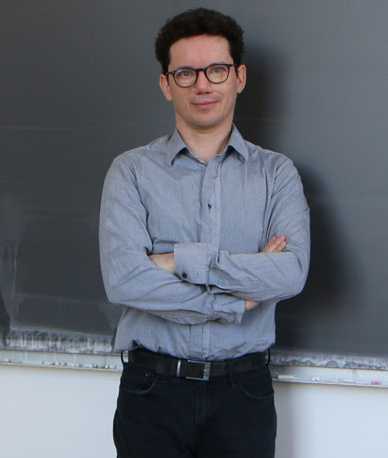Wendelin Werner: Royal Society member
The Royal Society, a major scientific society, has elected the mathematician, ETH professor and winner of a Fields Medal, Wendelin Werner, as its Foreign Member. Werner is a leading researcher in the field of probability theory and the geometry of chance.

The renowned external pageRoyal Societycall_made has elected Wendelin Werner as its member. This means that the ETH mathematician now officially belongs to the "Foreign Members of the Royal Society (ForMemRS)". The traditional British learned society has existed since 1660 and serves as the United Kingdom's national academy of sciences. It only admits scientists as its members who have made an "outstanding contribution to scientific understanding and its use for the benefit of humanity". They are elected for life through a peer review process.
"Since my time as a postdoc in Cambridge I have always closely kept in touch with the British mathematical world," says Wendelin Werner, "and it is really a nice feeling to become part of the Royal Society today.”
Besides Wendelin Werner, the Royal Society has elected 51 new Fellows, nine other Foreign Members and one Honorary Fellow. The Society currently has a total of about 1700 members from Great Britain and around the world. Since its foundation, it has had about 8000 Fellows and Foreign Members. Among them were scientific innovators such as Isaac Newton, Charles Darwin and Albert Einstein.
In contrast to the Fellows of the Royal Society (FRS), the Foreign Members of the Royal Society (ForMemRS) are neither citizens of the United Kingdom or the Commonwealth, nor do they work there. This is also evident in selected ETH researchers: As a British national, ETH materials researcher Nicola Spaldin has for instance been a Fellow since 2017, while ETH Nobel Prize winner Kurt Wüthrich has been a Foreign Member since 2010.
Outstanding contributions to random geometry
Wendelin Werner (*1968) is a mathematician in the field of probability theory. He has been a professor at ETH Zurich since 2013. With his research contributions he has revolutionised the understanding of so-called critical two-dimensional models in probability and physics. For his achievements in the field of the random geometry he was awarded the Fields Medal in Madrid in 2006, which is considered the "Nobel Prize in Mathematics".
His work on the so-called Schramm-Loewner Evolutions – curves that form at random – has enabled a new understanding of how random geometric phenomena function in two dimensions and has had important implications for the study of physical interfaces up to this day. His research has influenced younger researchers worldwide.
